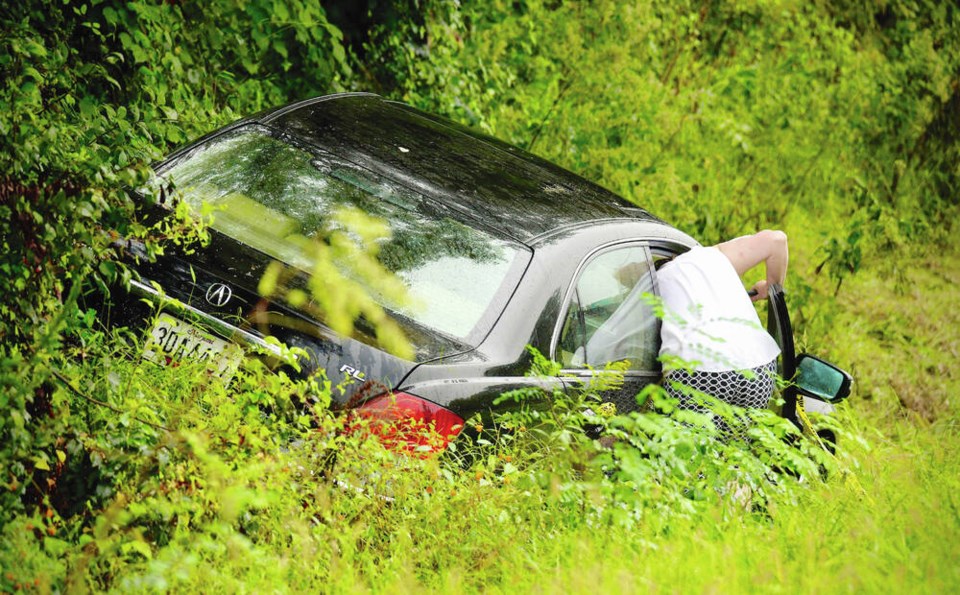It’s an age-old driving question. Do I brake or swerve to avoid an accident? It’s a tough choice with only microseconds to figure it all out.
Swerving or braking is going to be a purely physical reaction to an emergency moment. Having a moment to calmly think it through isn’t going to happen, especially at 80-100 km/h.
So what do you do? Unfortunately I’ll have to borrow a hat or two from some of my lawyer friends and say: “It depends.” The bottom line is you have to weigh your circumstances at the moment.
In the widest sense, most experts agree that you should either swerve or brake — but not both at the same time — to avoid a crash.
Hard braking causes your wheels to lose traction. Keeping traction with the pavement means keeping the ability to steer better. No traction — causing loss of steering control, especially when travelling at speed — is a worst case scenario.
Reducing speed before a collision is always going to mitigate the problem. If there is space to manoeuvre out of the way, the time to try to swerve is after you have reduced speed.
It’s also actually better in most instances to avoid full power on the brake pedal and keep that ability to steer through danger when your speed is finally reduced.
Anti-lock brakes have helped with these situations in a big way but they’re not infallible. With slippery, wet or oily road conditions, a loss of traction is still possible.
Swerving may be the answer however if: the road is straight, dry and in good condition; there is a shoulder or other clear lane to swerve into; there are no other vehicles around you at the moment; you have determined that the chances of entering into a skid are low or; just slamming on the brakes is not going to prevent the crash anyway.
In the right scenario, swerving may be the best choice in order to avoid hitting a pedestrian or other vulnerable road user. Swerving into or running into the back of another car is generally preferable to running over a person. At least that other vehicle has a steel cage around its occupants — a pedestrian or a cyclist does not.
A few minutes searching your favourite social media site will show you scores of examples of what not to do.
Vehicles which have successfully swerved around a problem on the highway enter into uncontrollable skids resulting in rollovers and multivehicle mishaps simply because they made the deadly combo choice of swerving and braking at the same time.
While it may be an instinctual move on the part of a human to swerve or duck out of danger, that instinct when coupled with driving at speed can lead to several serious problems.
Swerving at the wrong time can lead to driving off the road, hitting trees or light poles, causing a vehicle to roll over or swerving into the path of other vehicles causing multi collision events.
Remembering that every emergency scenario is different, the best advice then is to try to avoid swerving unless it involves hitting a vulnerable road user.
This also applies to avoiding wildlife. Numerous studies have shown that more damage and injury is caused by swerving to avoid animals on the road. Some experts though do make a swerving exception around hitting a very large animal like a moose or an elk as their massive bodies can crash right through car windshields, often totalling the vehicles and severely injuring occupants.
When should you avoid hard braking?
Your tire blows out. First step is to stay calm. Get a firm grip, not a death grip, on the steering wheel. Steer as straight as possible and even increase speed slightly to maintain control. When in control then get off the gas, then slow gradually using light brake pressure to move off to the shoulder. Jamming on the brakes after a blowout is the worst possible move.
You hit black ice. Maintaining steering control is always your best option here as well. Hard steering corrections and especially trying to brake hard always results in a loss of control on a slippery road. Remove your foot from the gas and steering smoothly and easily until you regain control — then brake lightly.
You’ve already entered into a hard skid. Your best move here again is to get off the gas and steer through the problem. You need those wheels to keep turning over the pavement so that you can regain control. Locking the wheels up robs you of that option.
As always, reducing and keeping distance still are the best defences to not have to make that least bad choice about whether to swerve or brake.



